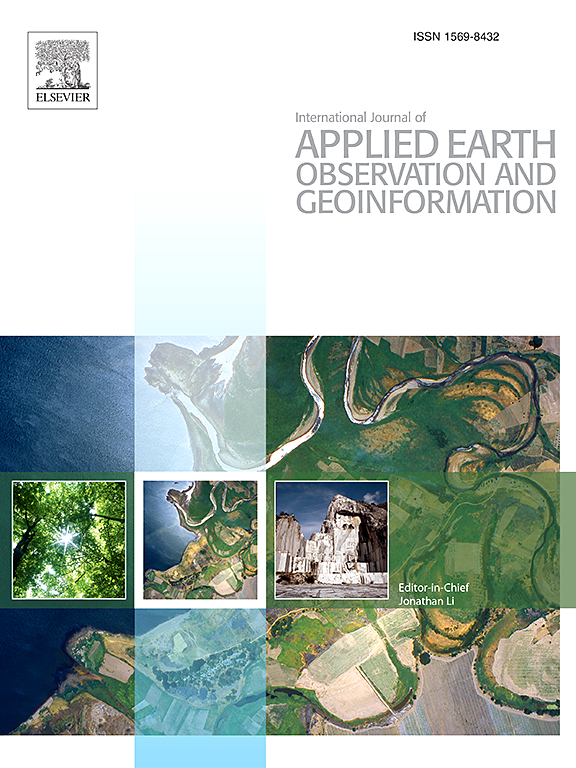Multitemporal Sentinel and GEDI data integration for overstory and understory fuel type classification
IF 7.6
Q1 REMOTE SENSING
International journal of applied earth observation and geoinformation : ITC journal
Pub Date : 2025-03-20
DOI:10.1016/j.jag.2025.104455
引用次数: 0
Abstract
Wildfires significantly reshape the landscape of the Mediterranean basin, altering forest composition, structure, and diversity. Consequently, detailed fuel mapping is crucial for improving fire risk assessment and enhancing fire behavior modeling, as wildfires typically ignite from surface fuels and may spread vertically to canopy fuels due to canopy fuel continuity. This study generates a fuel type map of the overstory and understory based on the FirEUrisk hierarchical fuel classification system (FHFCS) in three steps, including overstory mapping using multispectral and radar data (Sentinel-1 and Sentinel-2), and topographic variables; shrubland and grassland height estimation using biophysical models based on precipitation and Normalized Difference Vegetation Index (NDVI); and understory mapping using spaceborne LiDAR data from the Global Ecosystem Dynamic Investigation (GEDI) and decision rules. An Overall Accuracy (OA) of 84.53% was achieved for overstory mapping for the composition of Vegetation Indices (VIs), Gray-Level Co-Occurrence Matrix (GLCM) textures, vertical transmit–horizontal receive (VH) of Sentinel-1, and elevation, integrated with biophysical models. Cropland, urban, non-fuel, and various forest classes, particularly evergreen needle-leaved forests, demonstrated outstanding performance, achieving F1 scores ranging from 83% to 100%. Finally, a rule-based model was established using Relative Height (RH) metrics from GEDI L2A data to estimate the height and type of understory defined in FHFCS with an OA of 69.2%. The RH metrics and decision rules proved a significantly effective and easy-to-interpret approach for estimating understory type and height in the absence of airborne LiDAR data. This three-step methodology provides a simple and efficient approach to large-scale overstory and understory mapping using multispectral, radar, and LiDAR data, which may facilitate both surface and crown fire simulation.

求助全文
约1分钟内获得全文
求助全文
来源期刊

International journal of applied earth observation and geoinformation : ITC journal
Global and Planetary Change, Management, Monitoring, Policy and Law, Earth-Surface Processes, Computers in Earth Sciences
CiteScore
12.00
自引率
0.00%
发文量
0
审稿时长
77 days
期刊介绍:
The International Journal of Applied Earth Observation and Geoinformation publishes original papers that utilize earth observation data for natural resource and environmental inventory and management. These data primarily originate from remote sensing platforms, including satellites and aircraft, supplemented by surface and subsurface measurements. Addressing natural resources such as forests, agricultural land, soils, and water, as well as environmental concerns like biodiversity, land degradation, and hazards, the journal explores conceptual and data-driven approaches. It covers geoinformation themes like capturing, databasing, visualization, interpretation, data quality, and spatial uncertainty.
 求助内容:
求助内容: 应助结果提醒方式:
应助结果提醒方式:


